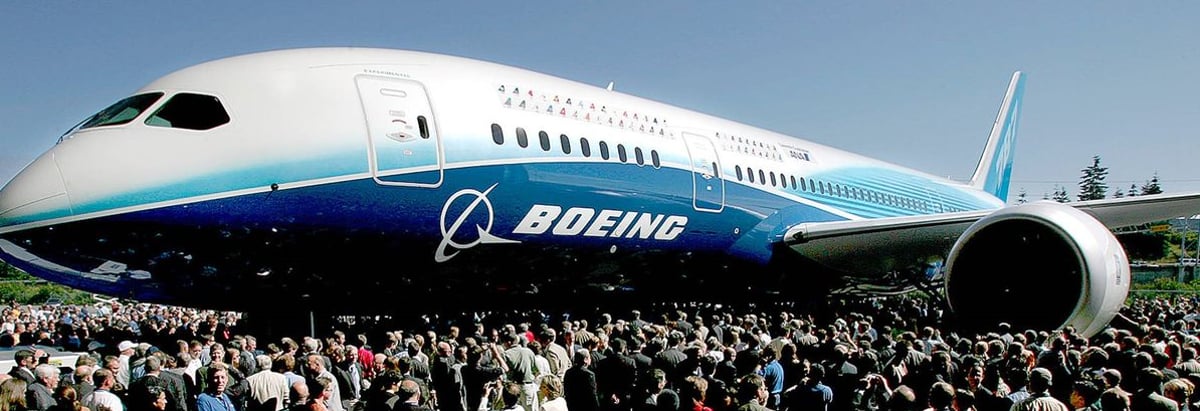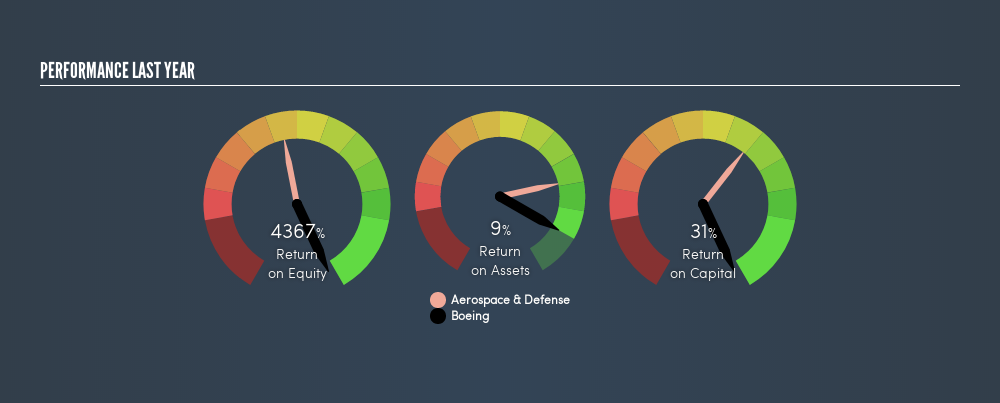
Want to participate in a short research study? Help shape the future of investing tools and you could win a $250 gift card!
Today we are going to look at The Boeing Company (NYSE:BA) to see whether it might be an attractive investment prospect. To be precise, we'll consider its Return On Capital Employed (ROCE), as that will inform our view of the quality of the business.
Firstly, we'll go over how we calculate ROCE. Then we'll compare its ROCE to similar companies. Finally, we'll look at how its current liabilities affect its ROCE.
What is Return On Capital Employed (ROCE)?
ROCE measures the 'return' (pre-tax profit) a company generates from capital employed in its business. In general, businesses with a higher ROCE are usually better quality. Ultimately, it is a useful but imperfect metric. Author Edwin Whiting says to be careful when comparing the ROCE of different businesses, since 'No two businesses are exactly alike.'
So, How Do We Calculate ROCE?
The formula for calculating the return on capital employed is:
Return on Capital Employed = Earnings Before Interest and Tax (EBIT) ÷ (Total Assets - Current Liabilities)
Or for Boeing:
0.31 = US$11b ÷ (US$120b - US$84b) (Based on the trailing twelve months to March 2019.)
Therefore, Boeing has an ROCE of 31%.
See our latest analysis for Boeing
Does Boeing Have A Good ROCE?
One way to assess ROCE is to compare similar companies. Boeing's ROCE appears to be substantially greater than the 12% average in the Aerospace & Defense industry. We would consider this a positive, as it suggests it is using capital more effectively than other similar companies. Setting aside the comparison to its industry for a moment, Boeing's ROCE in absolute terms currently looks quite high.
Our data shows that Boeing currently has an ROCE of 31%, compared to its ROCE of 17% 3 years ago. This makes us think the business might be improving.

Remember that this metric is backwards looking - it shows what has happened in the past, and does not accurately predict the future. Companies in cyclical industries can be difficult to understand using ROCE, as returns typically look high during boom times, and low during busts. ROCE is only a point-in-time measure. Future performance is what matters, and you can see analyst predictions in our free report on analyst forecasts for the company.
What Are Current Liabilities, And How Do They Affect Boeing's ROCE?
Liabilities, such as supplier bills and bank overdrafts, are referred to as current liabilities if they need to be paid within 12 months. Due to the way ROCE is calculated, a high level of current liabilities makes a company look as though it has less capital employed, and thus can (sometimes unfairly) boost the ROCE. To counter this, investors can check if a company has high current liabilities relative to total assets.
Boeing has total assets of US$120b and current liabilities of US$84b. As a result, its current liabilities are equal to approximately 70% of its total assets. Boeing's high level of current liabilities boost the ROCE - but its ROCE is still impressive.
What We Can Learn From Boeing's ROCE
In my book, this business could be worthy of further research. There might be better investments than Boeing out there, but you will have to work hard to find them . These promising businesses with rapidly growing earnings might be right up your alley.
If you are like me, then you will not want to miss this free list of growing companies that insiders are buying.
We aim to bring you long-term focused research analysis driven by fundamental data. Note that our analysis may not factor in the latest price-sensitive company announcements or qualitative material.
If you spot an error that warrants correction, please contact the editor at editorial-team@simplywallst.com. This article by Simply Wall St is general in nature. It does not constitute a recommendation to buy or sell any stock, and does not take account of your objectives, or your financial situation. Simply Wall St has no position in the stocks mentioned. Thank you for reading.
About NYSE:BA
Boeing
Designs, develops, manufactures, sells, services, and supports commercial jetliners, military aircraft, satellites, missile defense, human space flight and launch systems, and services worldwide.
High growth potential low.
Similar Companies
Market Insights
Community Narratives



